Abstract
This work introduces the Playful Projects-based methodology, created with the aim of contributing to scientific and mathematic literacy from the STEM education perspective by means of work plans designed around traditional world board games. This methodology adapts that of Ethnomathematical Projects to non-formal educational contexts, building upon games as sociocultural objects of interest and play as a learning facilitator. Here, a summary of the first Playful Project designed around the Nepali board game
Keywords: Scientific educationmathematical educationSTEM educationplayful learningworld board gamesnon-formal education
1.Introduction
Here, we interpret scientific, mathematical, and technological literacy within the scope of
educational action in order to achieve the maximum development and the best possible performance in
each person’s life as well as in democratic participation and citizenship. As expressed by Acevedo
(2004, pp. 12-13), this aim of scientific education “must be addressed to contributing to citizenship
education above all”.
To achieve this literacy requires facilitating scientific learning and stimulating students’ interest in
sciences (Esteban, 2003). Science contextualization proves necessary in this task, thus addressing
socially relevant scientific topics in teaching, in addition to hypothesis formulation, observation, data
interpretation, and decision making (Esteban, 2003). Sanmartí and Marchán (2015) indicate that a
scientifically competent student is a student who can reflectively engage in matters related to science
and the ideas of science. This approach influences not only which sciences and which mathematics are
to be taught, but also how these disciplines are to be taught.
Bergen (2009) considers it necessary to encourage playful behaviour and to educate through play in
order to develop STEM disciplines (sciences, technology, engineering, and mathematics) and STEM-
related skills. The underlying idea is that the enquiry and reasoning of scientists and mathematicians
resembles children’s way of thinking when playing meaningfully.
Through adequately planned educational activities, play stimulates cognitive, emotional, and
communicative development while fomenting meaningful learning, all of which are essential aspects in
the construction of social knowledge (Melo & Hernández, 2014). More specifically, formal games
(games with rules) foster important skills needed in STEM disciplines, such as: creativity; meaningful
and complex problems solving (Barab & Landa, 1997), spatial thinking (Newcombe, 2010); hypothesis
formulation and argumentation; scientific approach to answering questions and drawing scientific
conclusions (Sanmartí & Marchán, 2015); enquiry and autonomy; innovation; interpretation;
mathematical modelling and analogy.
Furthermore, scientific and mathematical education extended to the sociocultural sphere, as in non-
formal contexts such as hands-on museums, toy libraries, science clubs, fairs and workshops, is
believed to lead to long-lasting achievements. Non-formal education relieves curriculum pressure,
fostering a holistic, cross-curricular, interdisciplinary approach.
Playful activities require resources that permit the development of play idiosyncrasy. To generate
these, we advocate the use of games that can serve as educational resources in both the formal and the
non-formal context (Fernández-Oliveras & Oliveras, 2014a). More specifically, we deem the use of
traditional strategy games as particularly valuable for scientific and mathematical education in non-
formal contexts. Williford (1992, p. 98) states that these games are “attractive vehicles for enhancing
general mathematical-reasoning skills”. Precisely, an educational environment organized around games
stimulates positive attitudes towards learning among students, and facilitates cognitive achievement, as
revealed by conceptions of future teachers in training (Fernández-Oliveras & Oliveras, 2014b, 2015).
In this sense, Ferguson (1995) reported improvements in multiple scientific and mathematical thinking-
related skills through educational chess: abstract reasoning, strategic planning, evaluation and
synthesis, critical thinking, problem solving, decision making, creativity, and flexibility. Wan et al.
(2011) have shown that professional
enhanced pattern-recognition skill developed by experience and deliberate practice.
Similarly, we can assume that other similar strategy games may offer comparable benefits. Two
fundamental processes take place in these games: 1) mental construction of the
players use short-term memory, visuospatial skills, logical relations, heuristic strategies, analogy, and
modelling; 2)
term memory, goal-based decisions, option evaluation, and decision making.
In the words of Melo and Hernández (2014),
Recognition of play as an essential function of human knowledge evolution and development,
and therefore of education, is fundamental, as to establishing its true pedagogical value and
recognising its merits in every dimension of the individual development. (p. 42)
Non-formal contexts, which encourage active participation of students of any age, allow enquiry-
based approaches. These require dedicating long time allotments to experiencing and reflecting on
activities, which may prove difficult to find in formal schooling. Moreover, participation in
extracurricular activities stimulates personal development during adolescence and early adulthood
(Eccles & Templeton, 2002; Eccles, Barber, Stone & Hunt, 2003; Mahoney, 2000). These activities
foster both peer relationships and relationships with adults, facilitate the formation of positive identities
(Eccles et al., 2003), stir motivation and leadership (Eccles & Templeton, 2002). This is the approach
we adopt in the experience presented in this work.
2.Objectives
We consider that some zero-sum1, complete2 and perfect information3 strategy games, such as chess,
can offer comparable benefits to those derived from it (Ferguson, 1995). This is the basis of our
proposal, for which the objectives are:
General objectives: 1.Contributing to scientific and mathematical literacy in a non-formal educational context,
fostering scientific, mathematical and cross-curricular competences development through
traditional world board games-based work.
2.Fostering interculturality, inclusion and dialogue as fundamental bases for personal
relationships and scientific learning in multicultural contexts.
Specific objectives: 1.Practicing some world board games as samples of activation of scientific and mathematical
thinking implicit in specific cultural contexts.
2.Explicitly stating modelled features of scientific and mathematical thinking immerse in the
games practiced.
1 A zero-sum non-cooperative game is one in which the victory (gain) or defeat (loss) of a player equally and complementarily matches the defeat (loss) or victory (gain) of the other players.
2 A complete information game is one in which every player is aware of the rewards and strategies available to other players.
3 A perfect information game is one in which every player is aware of all previously occurred events and decisions.
3.Collecting evidence of scientific and mathematically-inspired thinking in the approach of
games by participant players.
4.Validating our approach of world board games-based educational proposal.
5.Fostering playful culture, analysing and promoting educational values inherent to practiced
games.
6.Divulging some world board games as specific cultures’ heritage reflecting on their
cosmogonies, thus developing sociocultural knowledge.
3.Methodology
The proposal is structured around the teaching methodology of Ethnomathematical Microprojects
created by Oliveras (2005, 2008). Microprojects are open interdisciplinary work plans, designed
around a sociocultural object of interest, seeking the active and responsible participation of students in
the construction of interdisciplinary contextualized meanings, especially regarding scientific and
mathematical learning, and promoting a truly intercultural education. We have adapted this
methodology to the study of games as ethnomathematical sociocultural objects, creating what we here
term Playful Projects.
These Playful Projects are sequences of learning, communication, and reflective action activities
constructed around a game, and they encompass a wide variety of sociocultural, scientific, and
mathematical aspects. They are specially addressed to non-formal educational contexts. From a games
theory perspective, the games considered are bipersonal, zero-sum, complete and perfect information
games; from a cultural anthropology standpoint, they are world strategy board games.
An enquiry experience will be conducted in two educational centres in Granada, Spain, during the
third trimester of the academic course 2015-2016 to pursue the objectives stated above.
As shown in
questionnaire, is meant to assess personal playful and gaming background of participants as well as
playful environment provided in their educational centre. In phase 2, Playful Projects are implemented,
with participant observation and discussion groups. Finally, in Phase 3, questionnaires are administered
to analyse: development of scientific and mathematical thinking as well as other cross-curricular skills
(semi-structured), level of satisfaction, planning, and general development of the experience.
Optionally conducted interviews aim to further deepen insights.

Within Phase 2, Playful Projects follow a structure begun with the study of the game under
consideration as an ethnomathematical sociocultural object, from which specific aspects relevant to
STEM education emerge. This study is conducted in accordance with three categories taken from
Huxley’s (1955) concept of culture: artifact, mentifact, and socifact. Activities specifically designed
around the game to encourage scientific and mathematical thinking follow, presented in teaching
itineraries corresponding to the participants’ educational level.
Playful Projects are conducted in one-hour sessions in which the research team encourages player
enquiries, registers relevant observations, and makes audiovisual recordings.
In this work, we summarize the first Playful Projects to be implemented, entitled “Bagh Chal, a
Tigers-and-Goats Game”. The game bagh chal was selected from a previously prepared list of games of
interest (Gutiérrez-Perera, Fernández-Oliveras & Oliveras, 2015) for its potential in scientific and
mathematical education.
4.Playful Project “Bagh Chal, a Tigers-and-Goats Game”
4.1.The game-artifact. Modelling game components
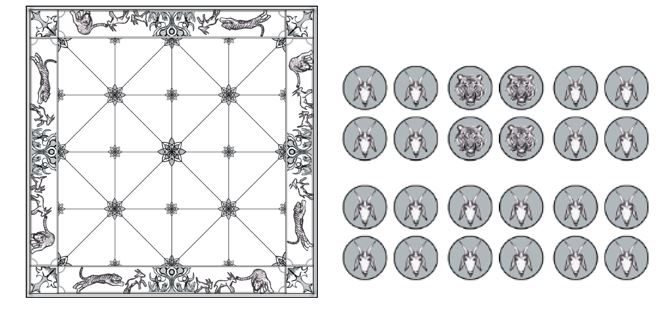
The game takes place on a square board (
4.1.1. Geometric characterization and construction of the board
The board is formed by two groups of parallel lines – five horizontals and five verticals, intersecting
in a 5x5 point grid, and six diagonal lines as shown in
intersection points during the game, and not at the triangular areas delimited by lines.
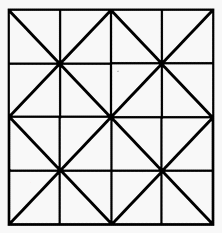
freehand, using a straightedge and compass, or with software such as GeoGebra. Due to space
restrictions, we cannot include the algorithmic descriptions of the constructions.
4.1.2. Technological construction of the pieces and the board
The abstract nature of the game is manifested in the fact that it is traditionally played on boards
excavated or drawn on the ground, using pebbles, little sticks or cattle excrement for pieces.
Manufactured boards are usually made of brass or wood, with a size of between 20 and 30 cm per side,
and pieces tend to be made of brass, wood, resin or plastic.
Any set of pieces can be used, provided that players agree upon its representation. The 20 pieces
representing goats must be equal to one another, and different from the 4 pieces representing tigers,
which in turn must be equal to one another. Shape is not important, as the game can be played in an
abstract fashion, as long as the size of the pieces is adequate in relation to that of the board and the
hands of the players, and the pieces have a flat side which can lie on the board. We suggest using
recycled or waste materials (e.g. caps, corks, clothes-pegs), beans, chickpeas, coins or coloured pieces
of glass. If figurative pieces are preferred, we recommend making these out of handicraft materials
such as clay, modelling clay, air-dried plaster, recycled paper, etc.
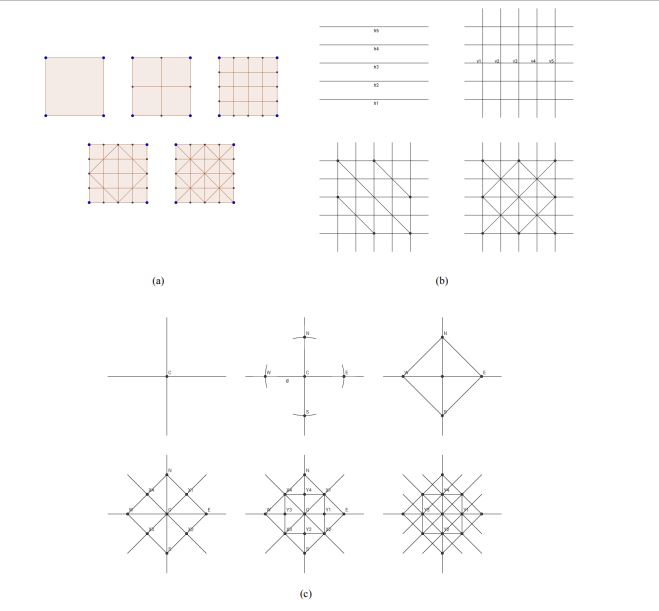
4.2.The game-mentifact. Game classification, rules, strategies
4.2.1. Game classification
According to mathematical games theory (Leyton-Brown & Shoham, 2008; Shoham & Leyton-
Brown, 2010), bagh chal is a bipersonal (it involves two players), finite (regarding the number of
available strategies or choices), dynamic (players do not simultaneously decide their strategies),
sequential (players alternate turns), non-cooperative (players compete and cannot win or lose together),
zero-sum, complete and perfect information game.
According to Ballesteros (2005), whose classification is based on the game objective and the type of
strategy employed to pursue it, bagh chal belongs to the family of
unequal opposing forces which try to capture the other player’s pieces.
Other authors (Gutiérrez-Perera, 2014, p.33), considering the symbolic aspects, classify it as a
hunting game, since it involves a confrontation between animal predators and prey, which is
idiosyncratic of the game’s cultural context. The two forces have “different objectives and even
different movement rules”: specifically, prey cannot capture, a distinctive factor in contrast to war
games, in which both forces can capture the opponent’s pieces.
4.2.2. Game rules
One player controls four tigers, initially placed on the board corners. The other player controls 20
goats, initially placed outside of the board. For the tigers, the objective is to capture five goats, while
the goats must completely block all of the tigers’ legal moves. The goats start the game.
The game takes place in two different phases. During the first phase, goats are placed, one per turn,
on any free intersection point; they cannot be moved. Tigers move, one per turn, to a free adjacent
intersection point along a line. A tiger can capture an adjacent goat if it can jump over it onto a free
intersection point on the other side, as long as the three points (origin, goat-occupied, and destination)
are aligned and interconnected. A tiger cannot jump over two goats, change jump direction in mid-air,
or make more than one capture in one turn. Capturing is not mandatory.
fourth turn. See a goat being captured in the tigers’ second turn, after a forced mistake made possible
by a poor initial placement on the goats’ side. However, on their third turn, the tigers miss a capture
opportunity, allowing the goats to strengthen their position on the fourth turn.
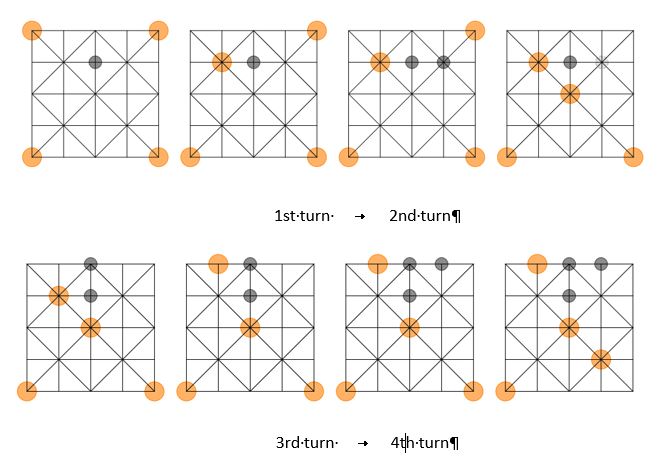
During the second phase, which starts once the 20 goats have been placed into the board, goats can
start moving, one per turn, to a free adjacent intersection along a line. They cannot capture tigers.
Tigers’ movement and capture rules are the same in both phases.
4.2.3. Regarding strategy and tactics
Bagh chal is not as widely popular and studied as chess is, this limiting information about possible
winning or facilitating strategies. “The placement phase involves a search whose game-tree complexity
is estimated to be of the order 1041”, according to Lim and Nievergelt (2004, p. 131). Ignoring
symmetric variants, the number of possible positions during the placement phase is 6,633,059,000,
while during the movement phase, it is 88,260,972 (Lim & Nievergelt, 2004). Size and structure of the
state space significantly delayed the game’s computational analysis, even though it was finally
determined that when played optimally on both sides bagh chal ends in a draw (Lim & Nievergelt,
2009).
of these five, due to the symmetry of the game board. Options (a) and (b) in the figure expose the goat,
offering an immediate capture. Option (d) allows the tigers to force a capture in their second turn, as
sequence on
capture, which should occur at most in their fifth turn, since in their fourth turn they can make a move
that is called “scissors” in chess, a double-threat so that the defender can save only one of the exposed
goats with the other one being inevitably captured. Option (c) is the only one which allows goats to
start a solid cantonment and avoid an early capture. Hence, the goats’ first move is practically
mandatory among those available if they are not willing to make an early sacrifice.

A facilitating strategy for the goats during the placement phase is to occupy the board sides and
corners. During the movement phase, there is one simple principle: the goats must try to advance in
unison in order to trap the tigers. They can manage to do so if they get to introduce free points into the
herd space, rendering them inaccessible to the tigers via jumps; in this way, they effectively control
available space and can hold it so that it is not returned into dispute, considerably reducing the tigers’
mobility.
Optimally playing tigers can force the capture of at least two goats during the placement phase.
Nevertheless, if they do not take this advantage and that phase ends with only one free point, the game
becomes complicated for them due to the mobility reduction. In that situation the goat herd can
frequently maintain a closed formation long enough to corral the tigers. During the movement phase
the tigers have little choice but to wait for the goats’ mistakes (sub-optimal decisions), thus limiting
tiger choices to tactical aspects. For the tigers, two fundamental goals at any moment are looking for
scissor-like moves and keeping as scattered on the board as possible, thus threatening more space for
plausible captures and trying to avoid being blocked all at once.
4.3.The game-socifact. Sociocultural aspects of the game
The game’s name bagh chal (��� ���
Newar or Nepal Bhasa) can be translated as “the tiger moves” or “the tiger’s movement”. The tiger is
commonly considered king of the animals in Asia and therefore has a leading role in several games
from East and Southeast Asia which represent the tiger’s hunt of different prey.
Bagh chal is Nepal national game and said to be “ideal to play when the summer mornings’ sun is
too strong”. Nepali tradition says the game was created by Mandodari (
Mayasura, King of the
consort of Ravana, King of Lanka, according to the Hindu epic Ramayana, and belongs to the
With this Playful Projects, educators can work on the following STEM aspects with students-
participants:
- - Pieces involved: characterization, identification, count; representation of the abstraction.
- Board abstract geometry: 1. Descriptive aspects: characterization, constituent elements,
symmetry. 2. Constructive aspects: freehand, compass and straightedge, GeoGebra, other tools.
- Game tree: subset graph of the extensive-form game, representing the game development from
the start up to a given time.
- Next-move tree: subset graph of the extensive-form game, representing mental forecast of the
game development from a given time, showing several possible sequences of future moves.
- Abstract codification systems: to annotate game development representing moves in a coded
record of the game-tree nodes actually traversed.
- Argumentation.
- Deductive reasoning.
- Spatial thinking: 1. Orientation: localization and description of moves in a plane, cardinal
points, technological tools (compass or GPS). 2. Representation: Cartesian axes and
coordinates, floor plan, relation to maps and scales.
- Predation: biological interaction in ecosystems. Predators and prey. Food chain and trophic
levels.
- Natural environment: impact on cultural idiosyncrasies. Geographical, climatological, and
natural characterization of the origin.
- - Predator-prey mathematical model: Lotka-Volterra’s equations.
- Technological aspects: 1. Material selection: usage of recycled materials; reason and
convenience; practical, economic and ecologic considerations. 2. Construction of board and
pieces: tool selection, size choice, construction execution.
- Artistic aspects: design, craft, and decoration of board and pieces.
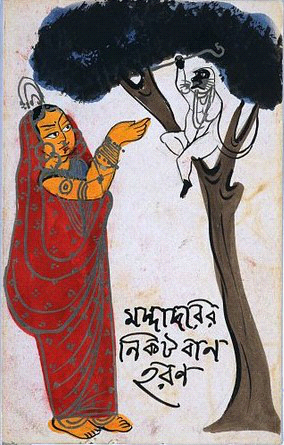
4.5.Activities and suggested itineraries
This Playful Project includes 11 activities specifically designed to work on the STEM aspects
indicated above through tasks pursued around bagh chal. Each activity is accompanied by several
questions that the educator can ask to stimulate the enquiry process. Many of these questions can
precede the practical work, so that participants can consider an
refuted through practice and then can draw conclusions based on argumentation. Due to space
constraints, here we present only four of these activities, omitting corresponding questions. The rest
will be addressed in a different publication.
The sequence of activities 1-5-7 constitutes a shortened version of the Playful Project,
recommended for time-constrained courses, workshops or events. It covers many of the STEM aspects
of interest, fostering scientific and mathematical thinking through a playful, motivating, and
stimulating educational action.
4.5.1. Activity 1: “Getting to know bagh chal”
A traditional version of the game of bagh chal is presented, and participants are asked to describe
the board and the pieces, emphasising quantitative, morphological, and geometric considerations, and
explaining peculiarities found.
4.5.2. Activity 5: “Learning bagh chal”
After the rules of the game are explained, participants are grouped in couples and invited to begin
playing and exploring the game in search of strategies. All participants are requested to play the same
number of games playing the tiger side as playing the goat side. After a pre-established number of
games, participant couples are gathered to debate their findings in a discussion group. All participants
are encouraged to take part in communicating their impressions about the game, the difficulties
encountered, their ideas about strategies or tactical decisions, their preference of tigers or goats, etc.,
using argumentation in their responses.
4.5.3. Activity 7: “Role-playing bagh chal”
A total of 24 volunteers are needed, 20 of them disguised in some way as goats and four as tigers.
Each participant to take part in the role playing must contribute a sweet, for a pot of 24 sweets. Also, a
giant bagh chal board is needed (it can be drawn on the school playground or the street using chalk; we
recommend approximately 1 metre or 1 yard between adjacent lines).
After the board and participants are arranged, the goal is to play a bagh chal game with the
participants as pieces. Each side needs to agree on how their moves will be decided. At the end of the
game, the winning side will be rewarded the pot of 24 sweets, to divide equitably among its members.
All decisions must be justified.
It is very useful to compare the way of playing the game on a board (floor-plan view or bird’s eye
view) to the way of playing with participants as pieces (perspective view or from within).
4.5.4. Activity 8: “Contextualising bagh chal”
The sociocultural, geographical, and natural contextualisation of the game is provided. The concepts
of ecosystem and biological interaction are approached, emphasising predation as an interaction type.
The conversation can include the concepts of food chain and trophic levels as well as the impact of
natural environment in cultural features. It is helpful to discuss whether the relation presented in the
game is the same as what occurs in the natural environment, and whether it resembles any other known
interaction between species.
5.Conclusions
This work introduces a methodology based on Playful Projects as an adaptation of
Ethnomathematical Microprojects. These Playful Projects are open interdisciplinary teaching modules,
constructed around a world board game interpreted as a sociocultural and ethnomathematical object of
interest. They are specifically designed to contribute to scientific and mathematical education in non-
formal contexts. Playful Projects, implemented via series of one-hour sessions, encompass sequences
of learning, communication, and reflective action activities, which are meant to motivate participants
and foster scientific and mathematical thinking as well as enquiry.
The Playful Project entitled “Bagh Chal, a Tigers-and-Goats Game”, based on Nepali traditional
game bagh chal, is presented. This game represents a confrontation between two asymmetrical forces
in a hunt scenario. The Playful Project has been designed to work on several relevant aspects from a
STEM educational perspective, such as spatial thinking and orientation, geometric modelling, strategy,
deductive reasoning, representation, coding, analogy, scientific speech, biological interactions.
We propose this as a pertinent and enriching approach to scientific and mathematical education
through world-games-based proposals, firstly, because play is a teaching resource proven to activate
emotional and cognitive factors, thus fostering the development of multiple skills; and secondly,
because these games are samples of cultural scientific and mathematical thinking (Bishop, 1998;
Gerdes, 1988) that can encourage intercultural and interdisciplinary education, a fundamental need in
today’s evermore globalized world.
Acknowledgements
To the Secretariado de Innovación Docente (University of Granada, Spain) for financing Teaching Innovation Project l5-44.
References
- Acevedo, J. A. (2004). Reflexiones sobre las finalidades de la enseñanza de las ciencias: educación científica.
- (), para la ciudadanía. Revista Eureka sobre Enseñanza y Divulgación de las Ciencias, 1(1), 3-16.
- Ballesteros, S. (2005). Juegos de mesa del CCS. , mundo. Madrid
- Barab, S. A.Landa, A. (1997). Designing Effective Interdisciplinary Anchors. Educational Leadership, 54(6), 52-55
- Bergen, D. (2009). Play as the Learning Medium for Future Scientists, Mathematicians and Engineers. American Journal of Play, 1(4), 413-428
- Bishop, A. J. (1998). El papel de los juegos en educación matemá Revista de Didáctica de las Matemáticas. , 18, 9-19, tica. Uno
- Eccles, J. S.Barber, B. L.Stone, M.Hunt, J. (2003). Extracurricular activities and adolescent development. Journal of Social Issues, 59(4), 865-889
- Eccles, J. S.Templeton, J. (2002). Extracurricular and other after-school activities for of Research in Education, 113-180. , youth. Review
- Esteban, S. (2003). La perspectiva histórica de las relaciones Ciencia-Tecnología-Sociedad y su papel en la enseñanza de las ciencias. Revista Electrónica de Enseñanza de las Ciencias, 2(3), 399-415
- Ferguson, R. (1995). Chess in Education Research Review of Key Chess Research Studies. Paper presented at the Borough of Manhattan Community College “Chess in Education: A Wise Move” Conference, Summary. A
- Fernández-Oliveras, A.Oliveras, M. L. (2014a). Playing for science and mathematics education: an experience for pre-service kindergarten teacher M. F. M. Costa, P. Pombo, B. V. Dorrío. , training. In
- (), 190
- (), eISSN: 2357-1330 Selection & Peer-review under responsibility of the Conference Organization Committee
- (), (Eds.), Hands-on Science. Science Education with and for Society (180 -183). Braga: Hands-on Science Network. Retrieved from http://www.hsci.info/Book_HSCI_2014_ lowresA4.pdf.
- Fernández-Oliveras, A.Oliveras, M. L. (2014b). Pre-service kindergarten teachers’ conceptions of play, science, mathematics, and education. Procedia - Social and Behavioral Sciences, 152, 856-861. DOI
- Fernández-Oliveras, A.Oliveras, M. L. (2015). International Journal on Advances in Education Research. EduRe_V2_I1_P3.pdf. , 2(1), 37-48, Retrieved from http://edure.org/EduReJournalVol2N1/
- Gerdes, P. (1988). On culture, geometrical thinking and mathematics education. Educational Studies in Mathematics, 19(2), 137-162
- Gutiérrez-Perera, C. S. (2014). Programación didáctica de la asignatura de 4º de ESO Trabajo Monográfico de Investigación: "Juegos de mesa del mundo y etnomatemáticas". Unpublished master’s thesis, Universitat Jaume Castelló, Spain. Gutiérrez-Perera, C. S., Fernández-Oliveras, A., & Oliveras, M. L. (2015). Analizando y seleccionando juegos del mundo para la educación científica y matemática. ReiDoCrea, Revista electrónica de investigación y Docencia Creativa, monográfico Enseñanza y Aprendizaje de las Ciencias Experimentales y las Matemáticas, 22-27.. Retrieved from http://hdl.handle.net/10481/37111. . I,, Retrieved from http://repositori.uji.es/xmlui/handle/10234/108258
- Huxley, J. S. (1955). Evolution, Cultural and Biological. Yearbook of Anthropology ( Chicago: University of Chicago, pp. 2-25)
- Leyton-Brown, K.Shoham, Y. (2008). Essentials of Game Theory: A Concise Multidisciplinary Rafael, California: Morgan & Claypool. , Introduction. San
- Lim, Y. J.Nievergelt, J. (2004). Computing Tigers and Goats, ICGA Journal. , 27(3), 31-141
- Lim, Y. J.Nievergelt, J. (2009). Tigers and Goats is a draw, Games of No Chance : DOI. , 3, 163-176. MSRI
- Mahoney, J. L. (2000). School extracurricular activity participation as a moderator in the development of antisocial development. , 71(2), 502-516, patterns. Child
- Melo, M. P.Hernández, R. (2014). El juego y sus posibilidades en la enseñanza de las ciencias naturales. Innovación Educativa, 14(66), 41-63
- Newcombe, N. S. (2010). Picture Th. (Increasing Math and Science Learning by Improving Spatial Thinking. American Educator, summer 2010, 29-35+43)
- Oliveras, M. L. (2005). Microproyectos para la educación intercultural en Revista de Didáctica de las Matemáticas. , 11(38), 70-81, Europa. Uno
- Oliveras, M. L. (2008). The IDMAMIM project is “Innovation in Didactics for Mathematics in Multicultural contexts, with Immigrant and Minority pupils”. ICME 11.. Monterrey, Mé Study Group 33: Mathematics education in a multilingual and multicultural environment. , xico. Topic
- Sanmartí, N.Marchán, I. (2015). La educación científica del siglo retos y propuestas. Investigación y Ciencia, (469), 30-38, XXI
- Shoham, Y.Leyton-Brown, K. (2010). Multiagent Systems: Algorithmic, Game-Theoretic, and Logical Foundations [online]. , Retrieved from http://www.masfoundations.org/download.html
- Wan, X.Nakatani, H.Ueno, K.Asamizuya, T.Cheng, K.Tanaka, K. (2011). The Neural Basis of Intuitive Best Next-Move Generation in Board Game Experts. Science, 331, 341-346
- Williford, H. (1992). Games for Developing Mathematical Strategy. Mathematics Teacher, 85(2), 96-98
Copyright information

This work is licensed under a Creative Commons Attribution-NonCommercial-NoDerivatives 4.0 International License.
About this article
Publication Date
14 May 2016
Article Doi
eBook ISBN
978-1-80296-007-5
Publisher
Future Academy
Volume
8
Print ISBN (optional)
-
Edition Number
1st Edition
Pages
1-252
Subjects
Psychology, social psychology, group psychology, collective psychology, teaching, teaching skills, teaching techniques
Cite this article as:
Gutiérrez-Perera, C. S., Fernández-Oliveras, A., & Oliveras, M. L. (2016). Play in Scientific and Mathematical Non-Formal Education. Bagh Chal, a Tigers-and-Goats Game. In Z. Bekirogullari, M. Y. Minas, & R. X. Thambusamy (Eds.), Cognitive - Social, and Behavioural Sciences - icCSBs 2016, May, vol 8. European Proceedings of Social and Behavioural Sciences (pp. 178-191). Future Academy. https://doi.org/10.15405/epsbs.2016.05.19

